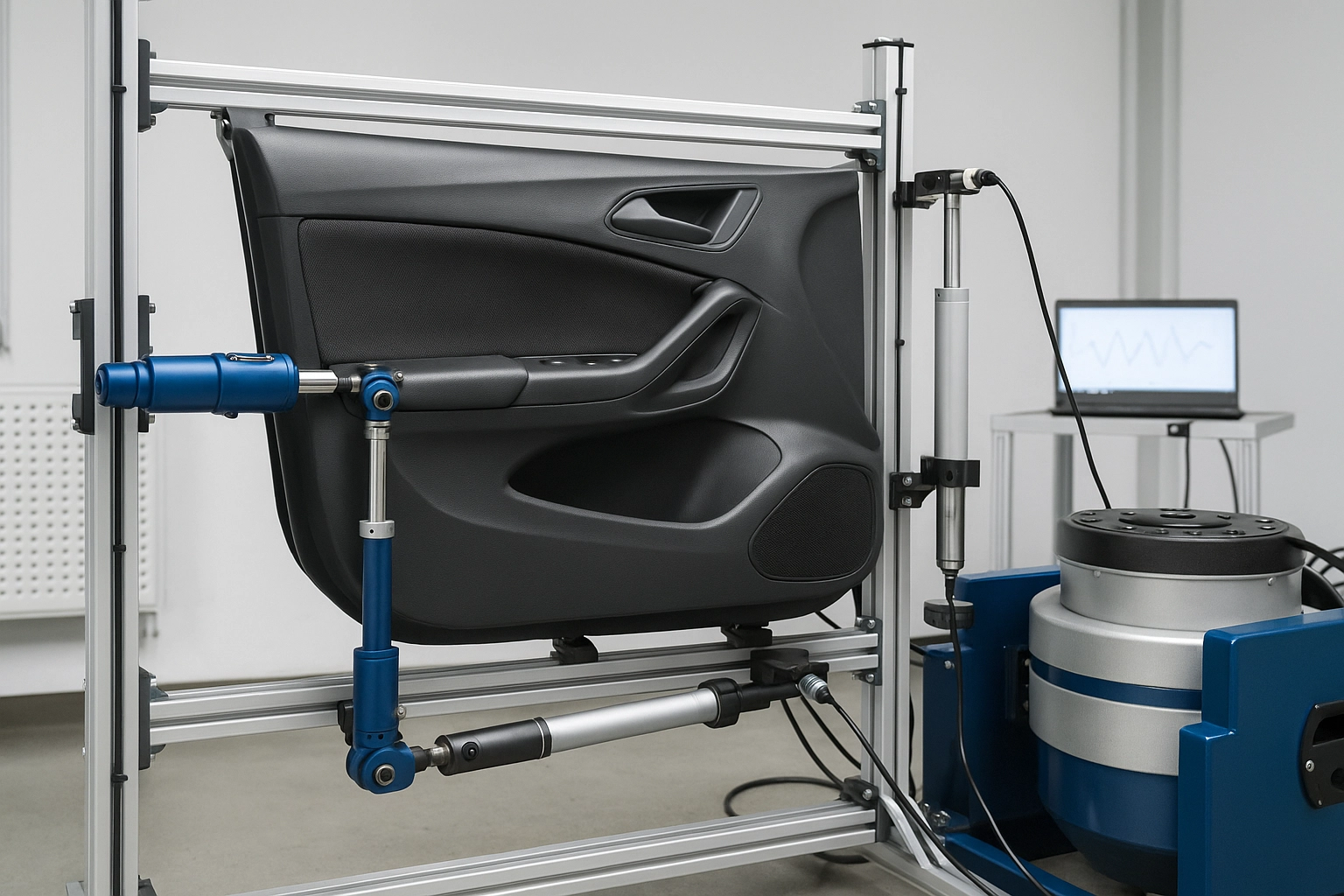ISO 362-1 Noise Measurement BSR Testing for Passenger Vehicles
The Buzz, Squeak & Rattle (BSR) phenomenon in passenger vehicles is a critical issue that affects both the driving experience and vehicle quality. ISO 362-1:2017 specifies procedures to measure noise levels produced by road vehicles during operation. This standard is particularly useful for identifying sources of unwanted sound, such as rattles or squeaks, which are often associated with BSR.
The process involves measuring the background noise in a controlled environment and then re-measuring after introducing components that may generate noise. By comparing these two sets of data, engineers can isolate specific sources of noise and address them effectively. This testing method is essential for ensuring that passenger vehicles meet stringent noise regulations and customer expectations.
The equipment used for this test includes an anechoic chamber with a controlled environment and a sound level meter capable of measuring noise levels in decibels (dB). The procedure requires careful setup to ensure accurate measurements, including calibrating the instruments before testing. Once calibrated, the test is conducted by driving the vehicle under normal operating conditions within the chamber.
After each run, the data are analyzed to identify any abnormal noise patterns that could be indicative of BSR issues. These tests can also help in the early stages of product development, allowing for the identification and rectification of potential problems before they reach production. By adhering to ISO 362-1:2017 guidelines, manufacturers can ensure their vehicles meet international standards while enhancing overall vehicle quality.
It is important to note that this testing method does not only apply to final products but also to intermediate stages of the manufacturing process where potential issues might arise. Early detection and rectification of these issues through noise measurement help in maintaining high-quality standards throughout production.
Applied Standards
The ISO 362-1:2017 standard is widely recognized for its comprehensive approach to measuring noise levels produced by road vehicles. This includes not only the measurement of background noise but also the evaluation of sound insulation performance between different parts of the vehicle. The standard covers various aspects such as the definition of terms, test procedures, and requirements for equipment used in these measurements.
The application of this standard ensures that all components contributing to the overall noise level are accounted for during testing. This holistic approach helps manufacturers identify specific areas requiring improvement, leading to more efficient use of resources and better outcomes in terms of product quality.
In addition to ISO 362-1:2017, other relevant standards include ISO 5862 which deals with road vehicle noise and ISO 4871 concerning the measurement techniques for automotive acoustics. These additional standards complement each other by providing more detailed information on specific aspects of vehicle noise management.
Why Choose This Test
- Accurate identification of BSR issues leading to improved product quality.
- Compliance with international regulations ensuring market access.
- Potential cost savings through early detection and rectification of defects.
The ISO 362-1:2017 Noise Measurement Test is highly beneficial for manufacturers seeking to enhance their reputation by producing quieter vehicles. By choosing this test, companies can demonstrate commitment to quality while also meeting stringent regulatory requirements. Early identification of potential noise sources allows for proactive measures aimed at preventing costly recalls and other negative outcomes associated with poor product performance.
The test results provide valuable insights into various areas of vehicle design and manufacturing processes that may need attention. This information is crucial in maintaining a competitive edge by consistently delivering superior products to consumers worldwide.
Use Cases and Application Examples
| Use Case | Description |
|---|---|
| Development Phase | Detecting early signs of potential noise issues during prototype testing. |
| Manufacturing Line | Ensuring consistent quality across production batches by regularly monitoring sound levels. |
| Field Testing | Identifying real-world conditions that may exacerbate BSR problems post-launch. |
| Regulatory Compliance | Satisfying mandatory noise regulations set forth by relevant authorities. |
- Promotes consistent quality control throughout the entire production process.
- Facilitates smoother integration of new technologies into existing systems without disrupting overall performance.
- Supports continuous improvement initiatives aimed at reducing noise emissions over time.
The application examples illustrate how the ISO 362-1:2017 Noise Measurement Test can be used across different stages of a vehicle's lifecycle. From initial design phases to ongoing production and post-launch operations, this test plays an integral role in ensuring that passenger vehicles meet high standards for noise control.





